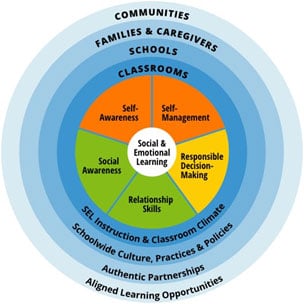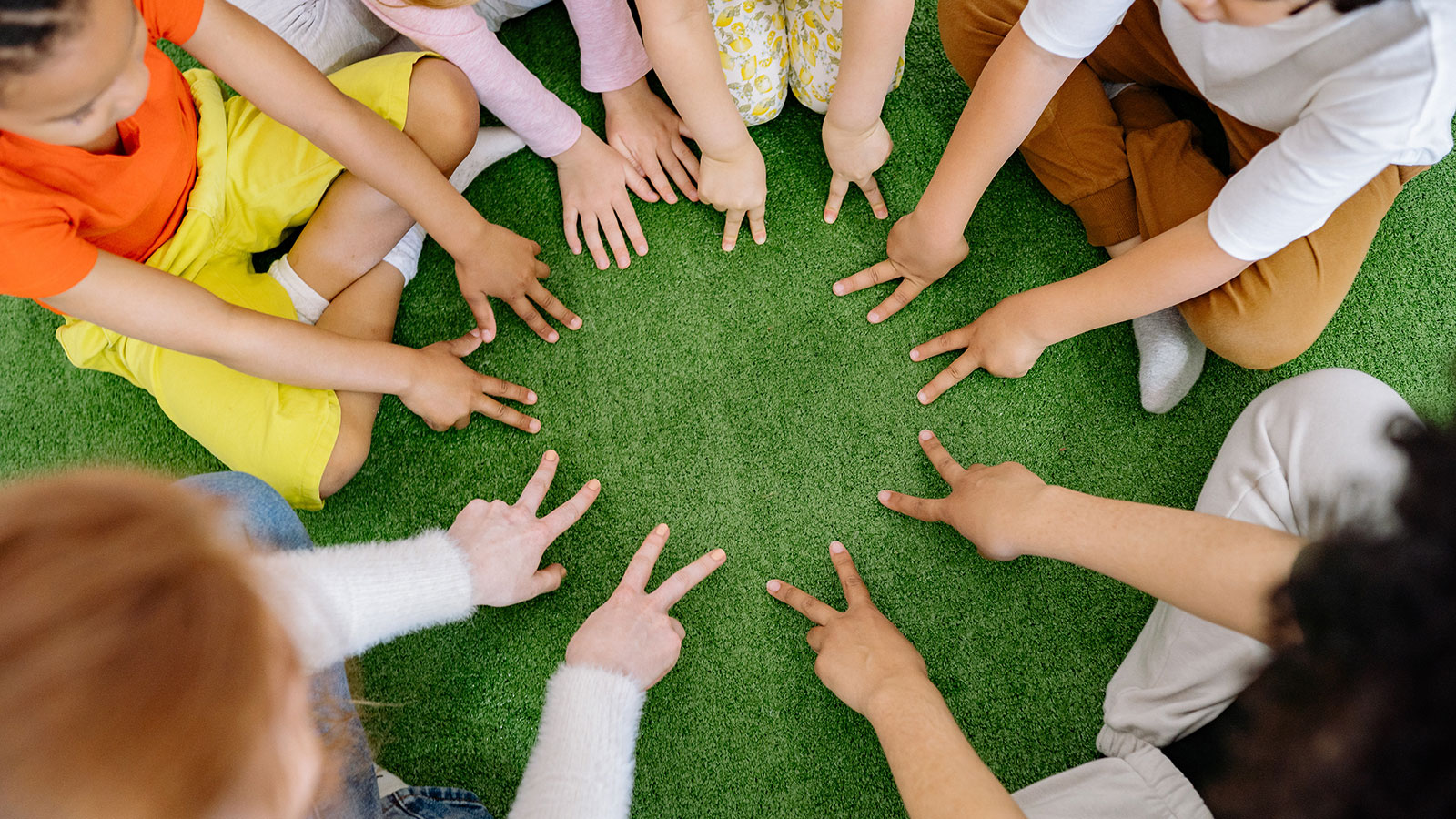Last Updated On: July 1st, 2024
What is Social Emotional Learning?
According to National University, “social emotional learning (SEL) is a methodology that helps students of all ages to better comprehend their emotions, to feel those emotions fully, and demonstrate empathy for others. These learned behaviors are then used to help students make positive, responsible decisions; create frameworks to achieve their goals, and build positive relationships with others.”
Can you unpack that?
Collaborative for Academic, Social, and Emotional Learning (CASEL) created a wheel to better demonstrate the components of Social Emotional Learning.

The key components are:
- Self-awareness – This means that students are able to look outside themselves and see the bigger picture. They see the way their emotions and actions affect others. Children acknowledge what aspects of character they excel at and what aspects they need to improve upon.
- Self- Management – This is very important for students as it is the emotional control. Can a child take responsibility for their feelings and determine which feelings are acceptable to share in each specific circumstance?
- Responsible Decision Making – This skill goes hand in hand with self-management. Can a child make intelligent, moral choices that support both themselves and those around them?
- Social Awareness – This component of the wheel asks students to use empathy and equality in all of their interactions. School should expose children to cultures and lifestyles they have never seen prior; it’s important to include and learn about all backgrounds of the community.
- Relationship Skills – This skill is focused around communication with peers. Children need to be able to ask for help from mentors and find common ground on conflicts. They should build friendships with a diverse group of individuals.
The CASEL wheel works in layers. From the inner layer we must encourage students to learn using these six key components. We must start this development in the classroom. Social Emotional Learning will then stem from the school. From this point it then spreads to families and caregivers. Until at last this learning model reaches communities. The CASEL wheel encourages learning and skills that stick with children in all aspects of life. The SEL style of learning fosters inclusion and supports ethics in all divisions of school, family, and community.
Why is social emotional learning so important for school?
Social emotional learning is important because students are re-training themselves to interact with others. After almost 2 years of interruptions, learning gaps, and online instruction they are revisiting “normalcy” at a rapid pace. What may have once been an easy transition from social time to school time, is now much harder. Relationships and social interactions that once seemed effortless are now a little more challenging. Kids are experiencing social anxiety and school anxieties. It can be overwhelming and it’s hard to know where to start.
In the last few years, our world has discussed and debated the standards for equality amongst all races and genders. It’s important for students to understand the heaviness and feel comfortable asking questions. It’s important they comprehend the transition of presidents and economic struggles. It’s important they explore what a global pandemic means for our future. It’s important that they acknowledge learning loss occurred and hone in on their weaknesses while working to improve and excel.
For a how-to guide, visit our blog on filling those learning holes.
Not to mention the value SEL has on a student’s future. This style of learning promotes a wholesome learning model, but it also provides students with skills to tackle their future. What kind of job doesn’t require social awareness? Don’t all employers expect a high level of self-awareness? Intelligence and grades can only get you so far. The world has higher expectations for its employees of this generation. Quality companies invest in their employees and expect that investment to be reciprocated in trustworthy, ethical, open-minded individuals. SEL is proven to be a teaching model that shows increased levels of higher education, quality relationships, improved mental health, and more involved citizens. This goes far beyond the classroom and teaches students values that can be implemented in everyday life.
How do I know if my student’s teacher is using SEL?
Edutopia states, “Promoting social and emotional development for all students in classrooms involves teaching and modeling social and emotional skills, providing opportunities for students to practice and hone those skills, and giving students an opportunity to apply these skills in various situations. One of the most prevalent SEL approaches involves training teachers to deliver explicit lessons that teach social and emotional skills, then finding opportunities for students to reinforce their use throughout the day.”
For example, most English teachers like to discuss the meaning of the most recent book chapter in language arts. Some teachers will allow children to just answer content questions and move on. But a great SEL teacher will ask for deeper meaning. They won’t focus heavily on what Atticus Finch said, they’ll focus on the subtext of his words, what they meant to Scout, and how they reflect the social dynamics of the setting. The teacher will give background and encourage a Socratic discussion that allows students to discuss their perspective on the chapter in a respectful, analytical way. The SEL teacher will see when students have differing opinions and interject to remind all parties that every opinion is valid and must be heard. By modeling tolerance and respect, they teach the class this social, emotional value.
Hear what educators think…
82% of educators agree that a well-crafted, fully integrated SEL approach makes an impact on future outcomes for their students CASEL
Why is Social Emotional Learning so valued by educators?
Educators have many reasons to stand behind this style of learning. Ultimately, it is the best of its kind. SEL is a format in which teachers are able to teach without as many parameters. What a syllabus and curriculum constricts, the CASEL wheel frees. When teachers format lesson plans, they are faced with a daunting task of increasing test scores, teaching content for the upcoming quiz, and making sure students don’t fall asleep. With the SEL style, a teacher has more flexibility and freedom. While the curriculum may still be a focus, it isn’t the primary focus. They are given the opportunity to have discussion in a manner that supports open-ended results and a students’ more holistic educational goals.
Additionally, the SEL teaching method not only improves the quality of the educational experience for children, but it also improves the experience of its educators. Why wouldn’t you want a teaching model that benefits both parties, prepares students for the real world, and delivers material in a unique real-world style?
Photo by Yan Krukov from Pexels




















